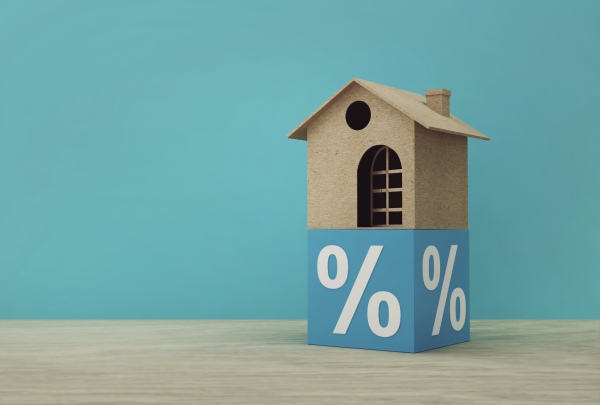
Many British landlords will have entered 2023 feeling battered and bruised. The private rental sector has faced an onslaught of spiralling mortgage rates, rising bills and incessant government legislation. Landlords who have survived thus far, now face the prospect of stuttering economic growth, a polarising political landscape and most worryingly of all – a potential collapse in house prices. For many, this has been the straw that broke the camel’s back. A significant number of landlords are opting to sell up and exit the market altogether. Why bother with the hassle of managing properties and tenants when your returns have been squeezed to the point of non-existence? Perhaps there are simpler and easier ways to invest your time and money.
Yet, with all the doom and gloom, we run the risk of missing Milton’s proverbial silver lining. The glimmers of positive hope which span beyond the current stormy clouds of the private rental sector, for all is not lost. Mortgage rates are beginning to peak, whilst burgeoning rental yields will begin to support increased mortgages costs, driven in part by the crippling lack of appropriate rental stock. Not only that, but declining house prices may afford astute investors the opportunity of a lifetime to purchase attractively valued properties ahead of a future price surge. There may well be simpler and easier ways to invest your time and money, but there is still life in being a landlord.
Mortgage Rates Are Beginning to Peak
For many investors, the returns from investing in typical buy-to-let properties are less lucrative than simply investing in the stock market. As the Investors Chronicle points out, a property bought in 2017 for £249,000 would have appreciated to around £310,000 by the end of 2022, generating an additional £96,000 in estimated rents over the period. Once you have deducted maintenance costs – which they equate to a scarily high 31 per cent of rental income – this is roughly equivalent to a 52 per cent return over 6 years. Comparatively, the S&P500 returned 90.1 per cent over the same period.
However, the true value in buy-to-let investment is the opportunity for everyday investors to benefit from leverage. The ability to borrow against your properties to turbo charge you growth. Taking the example above, if the investor had leveraged the purchase with an 80 per cent LTV mortgage fixed at 5 per cent over the period, their actual return would have been a whopping 134 per cent – blowing the S&P500 out of the water. Yet, with the Bank of England base rate quadrupling to 4 per cent in less than a year many over-leveraged landlords are beginning to feel the strain.
Still, there remains a silver lining for landlords. The roaring inflation which has tightened monetary policy and squeezed purses is beginning to stabilise, meaning rates will begin to plateau. Although there is the potential that the base rate will increase a further 1-2 per cent, mortgage rates themselves are beginning to flatten. It could well be that we are through the worst of things. Over the next 2-3 years, rates are expected to fall back down and normalise around 3-4 per cent, providing landlords with the opportunity to opt for tracker mortgages and enjoy the ride down, with falling monthly interest repayments.
A Less Competitive Industry
It is estimated that 70,000 landlords left the private rental sector in 2022 alone and it is likely that this trend will continue into 2023. Research by Propertymark suggests that the number of properties available to rent through letting agents in the month of March halved between 2019 and March 2022. It is believed that 84 per cent of landlords who withdrew their properties from letting agents, did so with the intention of selling. Similar data from Rightmove demonstrates that there were 26 per cent fewer homes available to rent in the third quarter of 2022 than the pre-pandemic average. In London the shortfall was even greater at minus 30 per cent.
The private rental sector is beginning to creak under the pressure of limited supply. There is a startling lack of appropriate rental properties on the market which are available to tenants. Whilst this is worrying news for tenants, legislators and landlord service companies alike, it does offer reason for landlords to be hopeful. Would-be tenants are waiting months for the right property to come to market. When a good quality property in a sought-after location does list, bidding wars are beginning to ensue as tenants push up the price in an attempt to secure the ideal property. As landlords continue to leave the market, those that remain will find that the private rental sector has become a less competitive market. Void periods will begin to fall, it will be easier to differentiate your properties and rent out high-value locations.
Whilst you shouldn’t hold your breath. The flight of landlords from the private rental sector may also encourage the government to take a more pragmatic approach to legislation. After half a decade of outright hostile legislations towards – or should we say against – landlords, the government may realise that its policies are actually leading to worse outcomes for tenants. They may even realise that fostering growth and competition in a market tends to lead to better outcomes for all. If not that, there is at least now more than a glimmer of hope that the constant barrage of restrictive legislation may begin to slow or withhold.

Rents Are Rising
Another reason to be hopeful is that rents are rising at their fastest rate in seven years, increasing 4 per cent in 2022. The stark decline in available rental properties has constricted supply, causing tenants to bid up properties. At the same time, rising mortgage rates have resulted in many first-time-buyers forestalling on purchasing their own properties due to the increased cost. This has bolstered the number of would-be renters searching for properties, helping to support rental growth.
Many expect this trend to continue into 2023, with specialist broker Finanze forecasting that rents across the UK will rise by as much as 12.91 per cent this year. More conservative estimates from the real estate company Savills, suggest that rents are still set to increase by 6.5 per cent in 2023, with a compounded growth rate of 18.3 per cent until 2027. This is great news for landlords. Rising rents will help to provide a buffer against higher mortgage costs and falling house prices, supporting returns in the short term. In the medium term, a combination of falling house prices and rising rents may allow rental yields to recalibrate to a more attractive and sustainable level, perhaps even to the point where landlords begin to be tempted back into the market.
Be Greedy When Others Are Fearful
The much-touted Sage of Omaha, Warren Buffet, once said ‘be fearful when others are greedy and be greedy when others are fearful’. Landlords and property investors certainly are fearful. The majority of market forecasters expect that house prices will tumble in 2023 and 2024. Most estimates suggest that prices could fall as much as 10% over the coming 18 months alone. But within this fearful forecasting is a silver lining. Not that properties will fall less than expected, rather than in falling they will provide the opportunity for confident landlords to capitalise on the opportunity.
How many landlords and investors have looked at historic price charts and guided their eyes to the very bottom of the lowest trough, pondering ‘if only I had bought there, think of my return’. Timing the market is no easy feat, but the coming months and year could well provide the opportunity of a lifetime for landlords prepared to take the risk. Faltering house prices and rising rents will begin to push up gross yields, making properties more appealing. Not only that, as investors step away from the market and house prices decline there will be a plethora of idiosyncratic opportunities. Properties which the average investor overlooks, but which are now undervalued and not competitively sought-after. With all this in mind, for some landlords, 2023 could be the making of them.
References
FT Advisor. (2023, Jan 04). Rents to rise by almost 13% this year. Retrieved from www.ftadvisor.com: https://www.ftadviser.com/buy-to-let/2023/01/04/rents-to-rise-by-almost-13-this-year/
Investors’ Chronicle. (2023, February 17-23). Is Buy-To-Let Still Worth It? pp. 24-27.
Propertymark. (2022, June 06). A shrinking private rented sector. Retrieved from www.propertymark.co.uk: https://www.propertymark.co.uk/resource/a-shrinking-private-renter-sector.html
Savills. (2022, November 03). Rental forecast 2023-27. Retrieved from www.Savills.co.uk: https://www.savills.co.uk/research_articles/229130/334953-0
Disclaimer: This Landlord Vision blog post is produced for general guidance only, and professional advice should be sought before any decision is made. Nothing in this post should be construed as the giving of advice. Individual circumstances can vary and therefore no responsibility can be accepted by the contributors or the publisher, Landlord Vision Ltd, for any action taken, or any decision made to refrain from action, by any readers of this post. The opinions reflected in this post are not necessarily opinions held by Landlord Vision. All rights reserved. No part of this post may be reproduced or transmitted in any form or by any means. To the fullest extent permitted by law, the contributors and Landlord Vision do not accept liability for any direct, indirect, special, consequential or other losses or damages of whatsoever kind arising from using this post.



